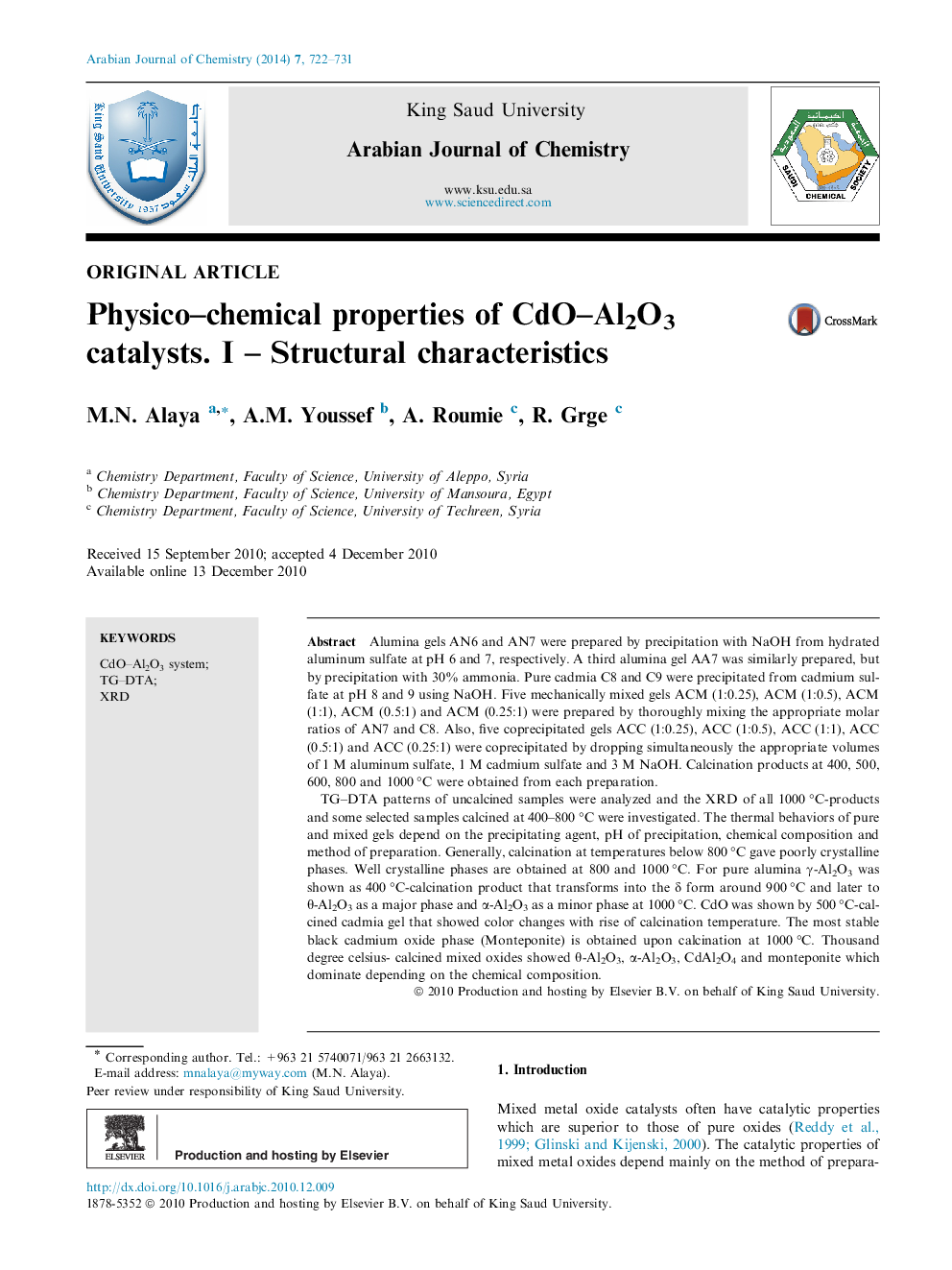| Article ID | Journal | Published Year | Pages | File Type |
|---|---|---|---|---|
| 1252803 | Arabian Journal of Chemistry | 2014 | 10 Pages |
Alumina gels AN6 and AN7 were prepared by precipitation with NaOH from hydrated aluminum sulfate at pH 6 and 7, respectively. A third alumina gel AA7 was similarly prepared, but by precipitation with 30% ammonia. Pure cadmia C8 and C9 were precipitated from cadmium sulfate at pH 8 and 9 using NaOH. Five mechanically mixed gels ACM (1:0.25), ACM (1:0.5), ACM (1:1), ACM (0.5:1) and ACM (0.25:1) were prepared by thoroughly mixing the appropriate molar ratios of AN7 and C8. Also, five coprecipitated gels ACC (1:0.25), ACC (1:0.5), ACC (1:1), ACC (0.5:1) and ACC (0.25:1) were coprecipitated by dropping simultaneously the appropriate volumes of 1 M aluminum sulfate, 1 M cadmium sulfate and 3 M NaOH. Calcination products at 400, 500, 600, 800 and 1000 °C were obtained from each preparation.TG–DTA patterns of uncalcined samples were analyzed and the XRD of all 1000 °C-products and some selected samples calcined at 400–800 °C were investigated. The thermal behaviors of pure and mixed gels depend on the precipitating agent, pH of precipitation, chemical composition and method of preparation. Generally, calcination at temperatures below 800 °C gave poorly crystalline phases. Well crystalline phases are obtained at 800 and 1000 °C. For pure alumina γ-Al2O3 was shown as 400 °C-calcination product that transforms into the δ form around 900 °C and later to θ-Al2O3 as a major phase and α-Al2O3 as a minor phase at 1000 °C. CdO was shown by 500 °C-calcined cadmia gel that showed color changes with rise of calcination temperature. The most stable black cadmium oxide phase (Monteponite) is obtained upon calcination at 1000 °C. Thousand degree celsius- calcined mixed oxides showed θ-Al2O3, α-Al2O3, CdAl2O4 and monteponite which dominate depending on the chemical composition.
